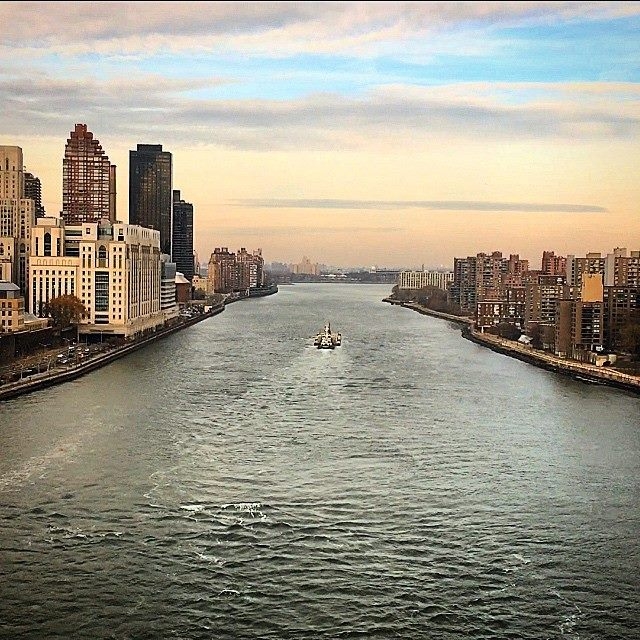DDJ: Would it be accurate to say that Perl doesn't enforce good design?
LW: No, it does not. It tries to give you some tools to help if you want to do that, but I'm a firm believer that a language -- whether it's a natural language or a computer language -- ought to be an amoral artistic medium.
- "A Conversation with Larry Wall," Dr. Dobbs, 1998
UC Berkeley, user paths. Photo, Peter Merholz
Something that's always struck me about interactive, online design is that, considering the immensely social nature of the medium, it often seems to exist in a bubble — or rather a box. Websites, mobile and iPad applications are all designed and developed by a group of people or individuals usually with the hope of mass consumption. And yet despite all that (hoped for) human traffic, most mass sites feel more like cloistered, master-planned suburbs rather than thriving, ever-changing and evolving cities.
This...
...Or that? Or somewhere in-between?
Sure, after the early, chaotic days of web design, today's trend toward uber-clean, user-friendly design is a site for sore eyes (that is quite literal and yes, pun intended). But I can't help feeling like we've gone from one extreme to another.
I always think about Myppace versus Facebook. When I was first introduced to the former, I simply couldn't deal with all the flashing, disorganized mayhem. After signing up I rarely returned.
Your space was definitely not My space.
Facebook was a breath of fresh air and demonstrated the power of good design on a mass-scale that continues to this day.
Breathe it in. Breathe it in.
Huge strides are being made in online design that make the web a far more enjoyable experience. The business community writ large has finally embraced Thomas Watson's good design is good business dictum and all is rosy.
Thomas Watson and the Motherboard. Good Design is Good Business.
But I can't help feeling that something is missing. What I've always found so interesting and exciting about urban design, print design, product design — really all design that exists in the physical world — is that its use changes it. Stomp your feet down the sidewalk and the streetscape changes subtly. Flip through a magazine or book and watch the pages take on different patina. Even the laptop I'm typing this on has a few dings that mark it as mine — that give it context, history and depth.
Planet as Festival, Ettore Sottsass
Of course, web design is a different animal. It is executed in a completely different arena and much of the skills required to master it are completely unique to the space. But then again, many of them aren't. I'm searching for the web equivalent of a high-functioning city. A site designed with amazing infrastructure but one that doesn't come alive (or perhaps even work) without constant use. A site that morphs (not necessarily drastically) and becomes a better, more unique, more exciting place with each visit. A site where you leave your mark without having to leave a comment, upload a photo or share anything at all.
Much of this stems from growing up in Davis, California where an early design story always stuck with me. When the University of California Davis central quad was designed, key buildings were put in place but no pedestrian, bicycle or automobile pathways were put in place. The designers allowed the users to define the pathways. They relinquished a certain amount of design control, setting sign-posts (history building, science building, art building, agriculture building) but allowing the users to define how to get from here to there. The users played an integral part to how the space would come to be experienced. This wasn't some convoluted user-study. This was organic design at its rarest and best. It was a natural extension and true expression of the users' will.
Not surprisingly, further research revealed I was far from alone in my thinking. Looking for documentation on my UC Davis story led me to Peter Merholz — founder of Adaptive Path and apparently the person who coined the term blog — and his musings on the user paths at UC Berkeley from 2003. "In a presentation I gave a long time ago on emergent information architecture, I used the first birdseye photo to demonstrate how people will take a planned design and modify it to fit their needs. In the face of this, designers have two choices -- allow the modification, or throw up obstacles (God forbid you digress from the original Vision!)." And Peter's writings ultimately led me to Larry Wall, founder of the Perl programing language.
Friend and Larry...
Larry's thoughts are remarkable and reminded me very much of my one, true design hero, Ettore Sottsass (more on him later) as far as his openness and willingness to embrace the unknown go.
Ettore Sottsass
He did throw a bit of a wrench in my works though, concerning UC Davis, as Larry claims to have heard a very similar story about UC Irvine:
"I am told that when they built the University of California at Irvine, they did not put in any sidewalks the first year. Next year they came back and looked at where all the cow trails were in the grass and put the sidewalks there. Perl is designed the same way. It's not just a random collection of features. It's a bunch of features that look like a decent way to get from here to there. If you look at the diagram of an airline, it's a network. Perl is a network of features... It's more like glue than it is like Legos."
UC this or UC that, adaptive information architecture (personalization?) is worthy of some serious discussion alongside serious design dialogue. The two are not mutually exclusive. In relinquishing some design control I wouldn't be surprised to find some kind of new online nirvana. Maybe? Maybe.









